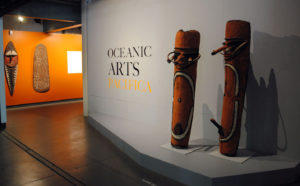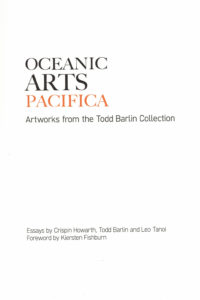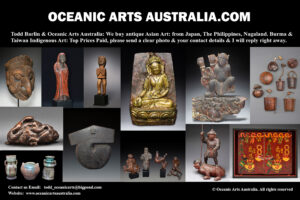Rare New Guinea Ceremonial Dance Mask Nggala People Swagap Village Upper Sepik River Papua New Guinea
| Collection No. | SOLD but more fine antique New Guinea Art coming soon ! |
|---|---|
| Size | Height 137cm x 38cm Wide |
A Rare New Guinea Ceremonial Dance Mask Nggala People Swagap Village Upper Sepik River Papua New Guinea
The beautiful and rare ceremonial Dance Mask is from the Nggala People of Swagap Village on the Upper Sepik River area in the East Sepik Province of Papua New Guinea. The mask is large at 137cm high, carved from a single piece of wood except for the attached bird effigy at the top. This type of mask is rare & not many were ever collected. Swagap village used to be called Nggala and that is how it is referred to by the late Douglas Newtown the former curator of Oceanic Art at The Metropolitan Museum of Art in New York & formerly called The Museum of Primitive Art later incorporated into the Rockefeller Wing at The Metropolitan Museum did his fieldwork amongst the Nggala people in 1964, 1965, 1967.
According to Douglas Newton ” At that time he estimated that there were only 140 people living at Nggala (Swagap). Newton later published a book on his research “Crocodile & Cassowary 1971” by The Museum of Primitive Art. The section about the Nggala in his book shows a similar mask at this example on page 49, the mask is made from bark except for the wood bird attached to the top.
These distinctive masks were made both in wood & bark and were used in the Mbangk Ceremony. The masks represented powerful local water spirits of their area, the masks were made in pairs and fastened back to back on the dancer who was in the middle of these masks. The dancer was painted black from head to foot and had a long grass skirt from his shoulders to the ground and he looked out through the holes in the mask’s eyes.
Douglas Newton writes “ The Mask was made in one section of the village but taken to another section to perform.; the mask represented a Water Spirit and consisted of two elongated masks fastened back-to-back and surmounted by the Hornbill carving. The masked dancer wore armbands & leg bands and he was painted black from head to foot and was covered with a long fibre skirt from shoulders to the ground. The mask fitted over his head and he could look out through the eyes of the mask. The masker had to be an elder man or an unmarried man.
The singing for the ceremony took place in the Ceremonial House and was accompanied by the beating of bamboo tubes on the ground. The ceremony began in the evening and continued through the night; in the morning the Mask emerged from the Ceremonial House and paraded through the village until mid-day. At the conclusion of the ceremony the masks were left in the village where the ceremony took place & the Hornbill Head was taken back to another village.”
Newton goes on in the section about the Nggala mythology
“a man of the Kokopfaniyan clan recognized the gong beaters of Dimbogela one of the Water Spirit masks of Wobi, the most important ritual was ganeb, the ritual beating of the slit gong drums restricted to important men who were homicides. They were initiated by being rubbed by nettle for this ceremony the sacred masks of the Water Spirits were brought out of the shelters where they were kept and displayed in the upper stories of the Ceremonial House. The slit gong drums represented the voices of the Water Spirits.
The Nggala had few contacts with Europeans before 1953 when the Australian Colonial officers started to visit regularly because of earlier headhunting raids that were to be extinguished by the Colonial administration.
Provenance: This fine mask was collected circa 1969-70. I have had it in my personal collection for 35 years and have enjoyed it immensely over the years.
It was exhibited & published in the exhibition Oceanic Arts Pacifica at The Casula Powerhouse Arts Centre in Sydney in 2014. The exhibition was mainly for the Pacific Islander community that lives in Western Sydney & during the opening weekend, several thousand Pacific Island people came to dance & sing & enjoy the art exhibitions. Published in the exhibition catalogue on page 55
You can see some photos of the mask in the exhibition space.
INQUIRE HERE
To see many more rare items and the finest masterpieces, please make an appointment with us to visit the gallery.
For all inquiries, please contact us.













